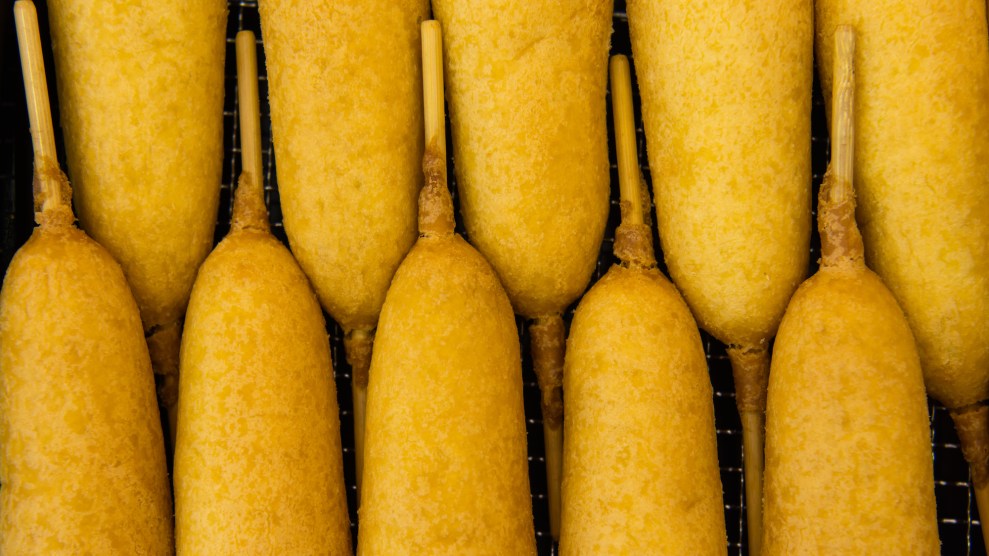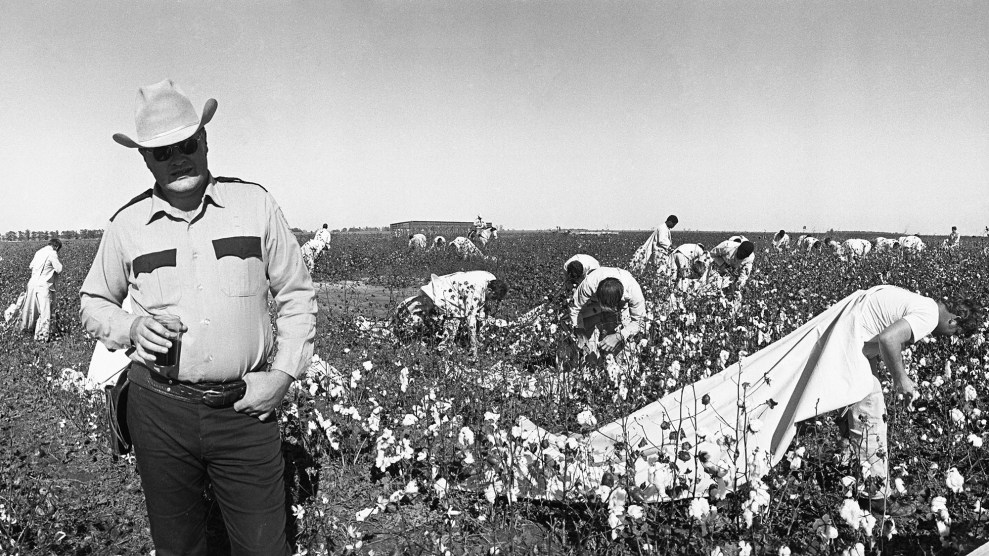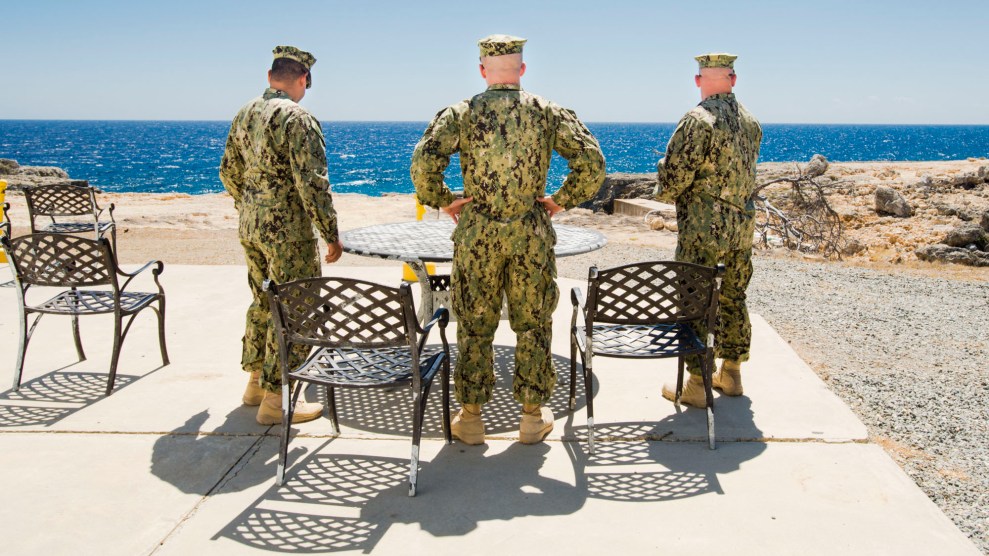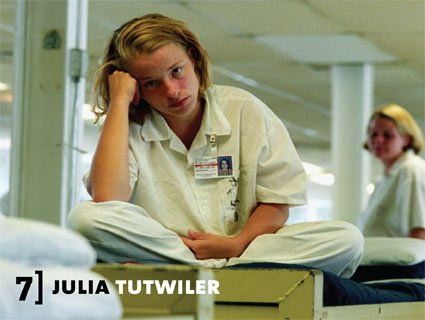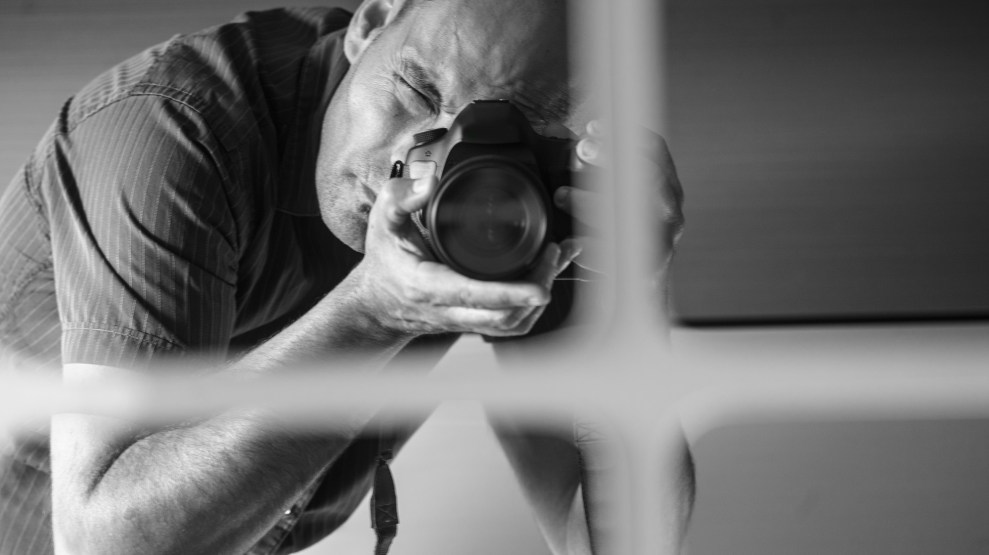
Ignacio Ruiz Casanellas/iStock/Getty Images Plus
A shirtless man is laying on a hospital cot as two gloved nurses tend to him. He’s covered in blood from multiple stab wounds to his chest, and it coats his clothes, the cot’s sheet, and the floor. This is just one of more than 2,000 photos, many of them similarly gruesome, leaked earlier this year from inside the St. Clair Correctional Facility, a notorious prison in Alabama.
The photos are certainly newsworthy: Alabama has one of the highest rates of prison deaths in the country, and St. Clair in particular has long been known for its brutality. But when the Southern Poverty Law Center, which obtained the photos from someone claiming to be a St. Clair correctional officer, shared the images with two news outlets, the responses couldn’t have been more different.
The New York Times published the first story on the photos at the end of last month. The piece included just five of the images, only one of which features an injured inmate. “After considering the inmates’ privacy, audience sensibilities, and our inability to provide more context for the specific incidents depicted,” the article says, “the Times determined that few of these photos could be published. But they could be described.” The Times’ decision to not publish many of the photos garnered some pushback, with some critics saying that the public had a right to know what goes on within prison walls. (The paper has been criticized for its photo decisions in the past; earlier this year it garnered controversy when it decided to publish a graphic photo of a dead body in Kenya.) Shaila Dewan, who wrote the accompanying article, told Mother Jones that it boiled down to protecting the privacy of the men depicted. (Dewan said although she had some input, the photos were ultimately selected by Times national photo editor Crista Chapman.) “The photos are incredibly dehumanizing and incredibly gory,” she said, “so from the point of view of the people in the photos, we have no way of knowing how they would feel about having those published.” However, Dewan said, “I don’t think there’s a right answer out there. I really respect other points of view on this subject.”
In an article last week, Splinter took a more liberal approach, publishing almost 50 of the photos and including a trigger warning for the most graphic of the bunch. Hamilton Nolan, a senior writer at Splinter and the author of the story, told Mother Jones that, after consulting with a lawyer, they ultimately decided to publish the photos because of a lack of public information about what goes on inside prisons. “One of the biggest problems with mass incarceration in America is that it’s completely hidden from public view,” Nolan said. “There’s a public value to people being able to see behind those walls.”
So whose approach was right? That’s a question that Pete Brook, a curator and researcher of the history of prison photography, recently asked his students to consider. Brook, who runs the blog Prison Photography, teaches a class on the topic inside San Quentin State Prison. He shared his students’ responses to the question, posed at the start of the Times story—“Would we fix our prisons if we could see what happens inside them?”—with Mother Jones. Their statements reflect the ethical gray area of the issue.
“As an eternal optimist, I have to say yes,” wrote Mesro Coles-El. “There are people in the world that take exception to injustices, cruel and unusual punishment, and violence, and they will make some noise…[Social justice activist] Bryan Stevenson has said that the first step in fixing the problem is to get proximate to the problem. Attitudes toward incarceration would change if the public were asked to execute the condemned themselves or, at least, to lock us up every night.”
Chan Lam, another one of Brook’s students, had an entirely different perspective: “Society has become desensitized to violence. Besides, prisoners are not people that are easily sympathized with,” he wrote. “‘Bad people’ hurting or killing ‘bad people’ doesn’t affect good people. If anything, people might think it makes the world a safer place.”
Mother Jones got on the phone with Brook to hear more about his students’ perspectives, the ethics of photographing the vulnerable, and the role of photography in social change.
Mother Jones: What’s your take on the ethics of publishing these photos? What are the benefits and drawbacks to publishing them?
Pete Brook: There’s a guy, Dan Berger, who wrote a Twitter thread about whether or not these should be published. He has an interesting point, which was if they were published, they probably would make no difference to public opinion, because the public has seen images of violence before, and in the past it’s not been enough to change the course of mass incarceration. Which is an argument I can get on board with, but it’s a hard stop on the conversation.
So…I have some thoughts on this. The @nytimes asks “Would we fix our prisons if we could see what happens inside them?” It seems rhetorical, but this question is an old one, and it has an answer: no. At least not simply by virtue of seeing abusive conditions. 1/ https://t.co/WG6agN2g7d
— Dan Berger (@dnbrgr) March 31, 2019
I suppose there’s no right or wrong answer here. But I would say my position is that it depends entirely on who the audience is. Photographs are a static thing, and the same photograph will say a different thing to every viewer. And so when the public looks at these photographs, is their first instinct to think, “Oh my God, look at this hellhole, this proves that these are dangerous people who should be locked away, and thank God they are”? Or do they think, “How the hell has the United States, and in this case, Alabama, allowed a system to develop which has essentially become a torture barracks”? I think that’s where all photographs that relate to prisons and crime fall. They will either confirm people’s bias, which is usually based upon fear, or at the other end of the ideological spectrum, they confirm that prisons are broken and have been for a long time.
So if I wasn’t sympathetic to Dan Berger’s argument, that these images would have no effect because the public doesn’t care, I would make a tentative argument for these images to be seen more widely. But the concern for me is then, where do they end up once they’re online? Do they just end up on 4chan, or whatever the sites are where people deal in shock and gore without understanding? I would say the main reason you would not publish any of these photos would be over concerns of privacy. Whether someone is at a parole hearing or at a request for rehabilitation or on a hospital bench with blood pouring out of them, you still want to ensure the privacy and the dignity of the prisoner.
MJ: How would you characterize the opinions of your students at San Quentin, generally?
PB: The men on the inside generally think there’s very little harm, and potentially a lot of benefit, from these images being seen by the public. The issue that I have at San Quentin is that I can’t share these images of violence because they are images of violence, even though many of my students have reported to me that they have witnessed incredible violence during their incarceration. I gave them the question, if we could see the violence in our prisons, would society change it? Would we fix it? I would say generally, they’re more optimistic than most in what power to change society photographs can have.
MJ: What role do you think photography can play in exposing injustice and enacting social change? The Abu Ghraib torture scandal, in which CBS News published photos taken by military members of the torture of detainees in an Iraq prison, comes to mind as an example of that.
PB: I would say that the photographs that really shape the public, that completely pull the carpet out from the public’s understanding or expectations or assumptions, tend to not be made by professional photographers. These photographs from Alabama would be a case in point. The Abu Ghraib photos would be a case in point. It takes a different type of distribution, a whistleblower, a leaker, in order to distribute a different type of image, and it’s usually more harsh, more brutal. I think the fact that it’s rarely a well-intended photographer—it’s more often a leak of the raw shit that happens behind prison walls—kind of sets up a dilemma, right? We know these images are powerful, we know they’re disgusting, we know they’re different. If anyone could set up a scenario where these photographs were distributed with a responsible conversation, and the back and forth, and the dialogue, and the context, the captions, the stories—that’s the ideal scenario, but that’s a utopia that doesn’t exist.
MJ: Prison operations tend to be very secretive, which is why photos such as the ones from Alabama often come from within prison walls. But when photographers are able to get access, what challenges do they face?
PB: It really depends on what your purpose is, but at San Quentin, it’s not uncommon for the guys to see a photographer on the yard from some media outlet. In most cases, prisoners welcome a photographer, but they welcome them most when they are invited to sit down for a portrait and also share their story—because they feel like they’re not just being used for image fodder, they’re being seen and understood as an individual. I think that’s popular with prisoners, because they understand that there are so many negative stereotypes out there. Prisoners on the inside understand that if they get an opportunity to work with an image maker, they can potentially make a positive representation of themselves. And they know that’s valuable.
MJ: When photographing or distributing photos of vulnerable populations, like prisoners, there’s always a concern of exploitation—of using a photo for its shock value rather than out of respect for its subjects. How does a photographer or publisher navigate that?
PB: Social change and political change can’t happen in a visual vacuum. If it was a case of having a world with those types of images or a world without those types of images, I would still take the world with the images. And I would take the difficult conversations, and the constant monitoring of ethics, and the discussions that go on in the field and that go on with the subjects and that go on later in the newsroom. It’s a really tricky thing to argue against access photography based on the notion of exploitation, because the idea of exploitation differs for everyone. I don’t even know what the parameters for that are—which makes writing about photography so much fun, because you’re constantly going over and going through these tough issues, which are based upon the fact that we all see images very, very differently. Which takes me back to my very first point, which is, are people going to look at these photographs from St. Clair and think that prisoners are horrible and violent and deserve to be thrown away? Or are they going to look at these photographs and see the total failures of the state? And there’s a big gap between those two responses.

